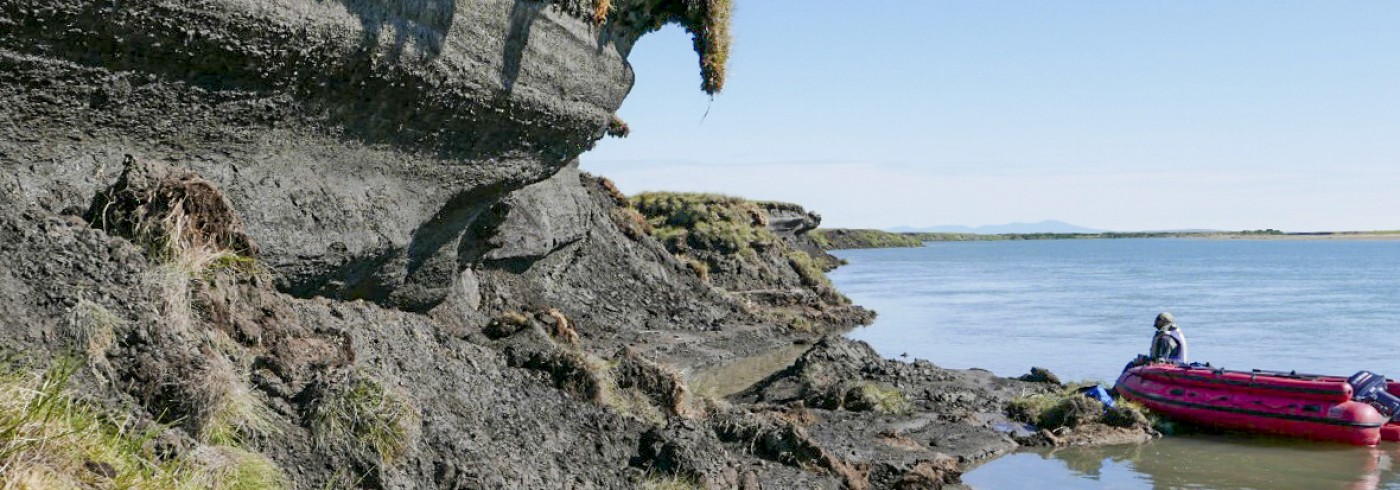
If were lucky, we can extract DNA from these bones and tusks and get some insights into the life conditions of different animals throughout history. Photo: Jesper Hansson

Jesper found a piece of a mammoth ivory that proved suitable for genetic analysis. Photo: Susana Marques Freire

There is a lot of historical material keept in the soil on Wrangel Island and Chaun delta. Since the soil is frozen even during the summer, a lot of the material is well preserved. Susana found, among other things, a bone from a ancient horse. Photo: Rasmus Erlandsson
I pick up the muddy piece of what looks like rotten driftwood. I turn it around and I see straight away that it’s not a piece of bison that I hold in my hand. I still have a lot to learn about fossils, but this was a jawbone from some kind of predator. Three black big pointed teeth makes it unquestionable.




